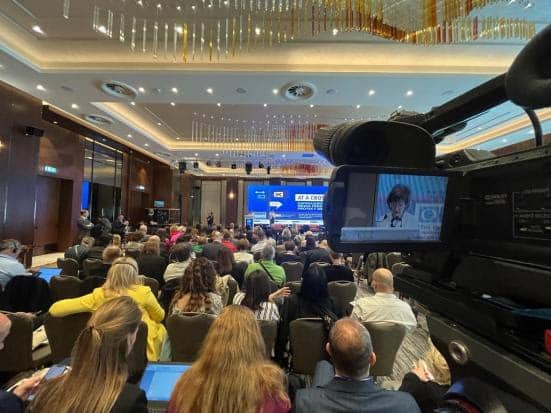SKOPJE/VIENNA, May 17, 2023 – The ninth South East Europe Media Conference, “At a Crossroads: Safeguarding Media Freedom to Protect Democracy,” concluded today.
The conference was organized by the OSCE Representative on Freedom of the Media (RFoM) in collaboration with OSCE field operations from South East Europe. This year’s conference brought together over 160 participants from various sectors, including journalism, media and legal experts, academia, civil society, and relevant state actors from the region and beyond.
It featured interactive panels, side events, and debates, providing a platform for in-depth discussions on media freedom in South East Europe. The conference explored current and emerging challenges and developments, while seeking viable solutions. The conference focused on the importance of independent journalism as well as on the need to seriously address the challenges related to the dynamics of the digital realm to promote and protect democratic values.
Special attention was given to improving the safety and working conditions for media professionals, recognizing that the threats they face not only endanger them individually but also pose a significant risk to democracy itself. Teresa Ribeiro, the OSCE Representative on Freedom of the Media, highlighted this concern, stating, “The threats to media and journalists are real and alarming, as they have a profound impact on the sustainability of people’s lives. Without ensuring journalists’ safety— encompassing physical, digital, economic, legal, and psychological aspects—quality and independent journalism cannot thrive, nor can a lasting and well-functioning democracy.” “This year’s Media Conference is particularly important given that the issues discussed – supporting independent journalism, addressing challenges in the digital realm and improving the conditions for media freedom – are challenges not only throughout the region, but across the globe,” stated Ambassador Kilian Wahl, the Head of the OSCE Mission to Skopje. “I believe it is most fitting that the conference took place this year in Skopje, during North Macedonia’s OSCE Chairpersonship, especially given the importance the Chair places on free media and safety of journalists,” he added. Discussions during the conference revolved around several key topics, such as the physical and online safety of journalists, the comprehensive viability of media organizations, legal harassment, the impact of artificial intelligence on freedom of expression, media self-regulation, and the detrimental effects of hate speech. Participants shared their experiences and insights, focusing on ongoing reforms and best practices to further enhance the environment for media freedom in the region. More information about the conference can be found here: OSCE South East Europe Media Conference “At a crossroads: Safeguarding media freedom to protect democracy” | OSCE The OSCE Representative on Freedom of the Media observes media developments in all 57 OSCE participating States. She provides early warning on violations of freedom of expression and media freedom and promotes full compliance with OSCE media freedom commitments.
Learn more at www.osce.org/fom, Twitter: @OSCE_RFoM and on www.facebook.com/osce.rfom.














